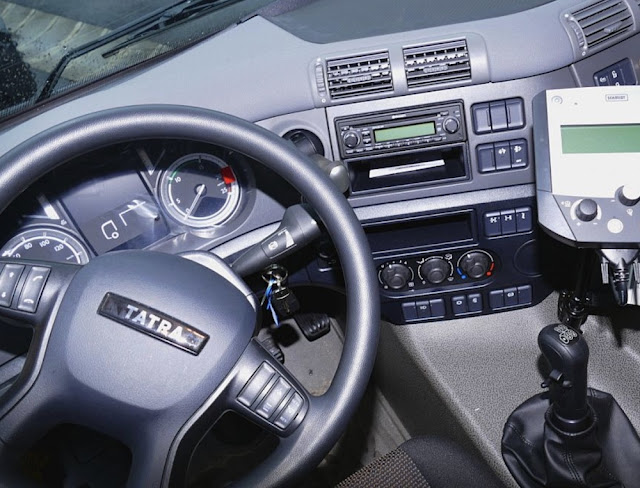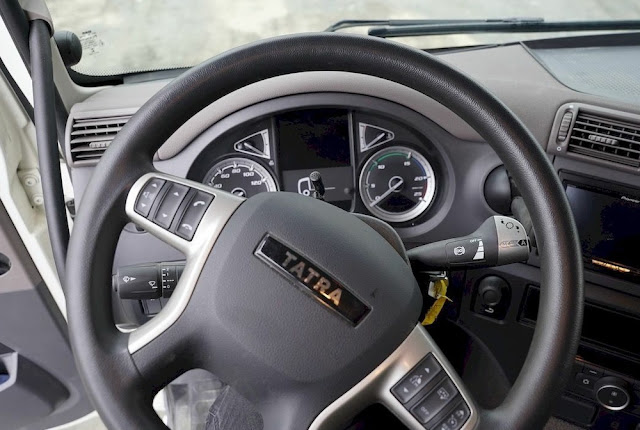There are many ways to upgrade a vehicle, and many of these tactics involve changing out the original equipment manufacturer (OEM) parts and installing parts that have more "personality" or are better suited to the primary driver. Replacing the steering wheel can make a difference not only in a vehicle's appearance, but also in how the vehicle handles and turns. There are many different types of steering wheels available, and steering wheels are used on all kinds of motor vehicles, including cars, trucks, vans, ATVs, golf carts, SUVs, RVs, buses, and boats. A few types of vehicles use handlebars instead of a wheel; these include motorcycles, scooters, and snowmobiles.

In order to replace a steering wheel, one should have a basic understanding of the steering system. A buyer should also be able to specify what type of vehicle the steering wheel is for, since the sizes and designs can vary considerably. Knowing the year, make, and model of the vehicle may also be important. Finally, understanding the different types and styles of steering wheels can help the buyer in making a final decision when purchasing a new steering wheel.
The Steering System
A vehicle's steering system is crucial to the proper and safe functioning of the vehicle and has many components. On many children's toys, one can see where turning the steering wheel turns the entire front axle as a unit so that both front wheels turn at the same time, and the process seems simple. In a passenger vehicle, however, and particularly a motor vehicle, this process can be quite complex.
Because the front wheels are relatively far apart in most passenger vehicles, each of the two wheels must be oriented differently when navigating a turn. For example, when making a right turn, the wheel on the right (the inside wheel) travels a shorter distance than the wheel on the left (the outside wheel). Thus, the inside wheel must turn more than the outside wheel.
Steering Gears
There are two basic types of steering: rack-and-pinion and recirculating ball. On most regular passenger vehicles, rack-and-pinions is more common.
Rack-and-Pinion Steering
In a rack-and-pinion system, the steering shaft connects the steering wheel and column to a pinion gear. This gear moves along a rack on top of the tube that connects both front tires. The tie rods that connect each tire to the tube can move somewhat independently, allowing the inside tire to obtain a tighter angle than the outside tire.
Recirculating Ball Steering
Recirculating ball steering uses a two-part worm gear, which consists of a metal block and pitman arm. The steering column is attached to the block so that when the steering wheel is turned, the block moves with it. This pulls the pitman arm, which is attached to the rods that connect to the wheels. The recirculating ball bearings are used in the threads of the block.
Power steering of both varieties becomes more complex, with a pump and power steering fluid as well as several other components. The thing to remember is that a steering wheel is not just a simple "handle" but part of a finely tuned system. If this system is out of balance, it can result in many driving problems and serious safety issues. Do not take the steering wheel for granted.
Steering Wheels
There are several factors that affect the function of a steering wheel. The first factor is size. The larger the diameter is on a steering wheel, the further the driver's hands must move in order to effect a turn. For this reason, race cars and sports cars usually have smaller steering wheels. A smaller steering wheel is more sensitive but paradoxically requires more effort to turn; however, in light race and sports cars, the extra effort exerted is hardly noticeable. Larger vehicles, such as SUVs, buses, and RVs, usually have larger steering wheels for smoother handling. Additionally, if the power steering should fail, a large steering wheel is much easier to work with in maneuvering a massive vehicle.

Modern steering wheels are used for more than just steering. That statement may catch many readers off guard until they stop to think about various controls set along the wheel and steering column for convenient access. The horn was the first item to be set into the steering wheel. Other controls that may be found today on the steering wheel include cruise control buttons, stereo buttons, computer keys, and (along the column) controls for windshield wipers, headlights, hazard lights, and turn signals.
There is another car function that involves the steering wheel, and that is the driver's side airbag. Removing and replacing a steering wheel today is a bit more involved because of this factor.
Steering Wheel Materials
Many steering wheels are made of metal or a combination of metal and some other material, such as wood. There are also plastic steering wheels on some vehicles. The gripping surface of a wheel may be plastic, rubber, foam, or upholstered fabric or leather.
Styles of Steering Wheels
Steering wheels are often described in terms of the number of spokes radiating from the hub to the outer wheel. There may be anywhere from one to four spokes. Some different steering wheel styles are described in the table below.
| Steering Wheel Style | Description |
|---|---|
| Banjo | Spokes are formed from sets of wires, like banjo strings, which absorb some shock |
| Adjustable | Examples of adjustable (as opposed to fixed) steering wheels include tilt , telescope , and swing-away wheels |
| Chain link | The gripping rim of the wheel is made of rigid chain links; commonly seen on lowrider cars |
Removable Steering Wheels
Some driving and car enthusiasts are not satisfied with the OEM steering wheel that comes in a vehicle. Steering wheels can be changed out, but as mentioned, this requires disabling the airbag system. The person working on the car should also disconnect the electric horn. The job usually requires a special tool called a wheel puller, which can be rented or borrowed. Also needed are an assortment of screwdrivers and a ratchet set or socket wrenches. The job can be done by an auto mechanic if desired.
Where to Find Steering Wheels
Interior vehicle parts, such as steering wheels, are available at auto parts stores and directly from auto part manufacturers through their websites or catalogues. Steering wheels are also available from vehicle dealerships and some mechanics. Online retailers and auction sites may have more types of steering wheels to offer than what is available in any physical store. Pre-owned steering wheels may be obtained at salvage, scrap, or junk yards. Other sources of used steering wheels include classified ads and garage sales.
Many people purchase a new steering wheel for looks or a better grip without fully considering the importance of this part. The steering wheel is a crucial part of safe driving. Furthermore, the steering wheel is a prime location for other vehicle controls, such as the horn, and houses the driver's side airbag, a critical piece of safety equipment. Regardless of the type of steering in a vehicle, the wheel is a component of a complex system. Understanding the basic ideas behind the steering system brings a new appreciation for this function in a vehicle. A steering system that does not function correctly could mean hitting a pedestrian or going over the edge of a mountain road. It is essential that a driver feel comfortable with the steering wheel.
When choosing a steering wheel, buyers should narrow their search down to a particular type of vehicle and also know the year, make, and model of the vehicle. The buyer should also know if he or she wants any special features on the steering wheel, such as tilt steering or a two-spoke wheel. Drivers can also specify the material used for the wheel itself and the gripping surface. By knowing the choices that are available, buyers can get a steering wheel with which they feel comfortable and that enhances the overall look of the car's interior.
Comments
Post a Comment